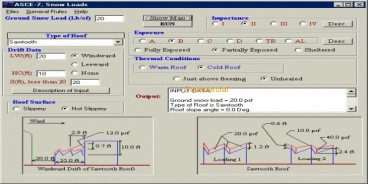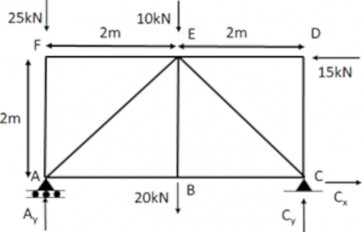Snow and rain loads
Snow and rain loads are considered in the design of structures, especially in regions where these conditions are dominant. These loads exert significant forces on structures, and accounting for them is essential to ensure the resistance and safety of buildings, bridges, and other infrastructure. More specifically, snow loads refer to the additional weight that snow accumulation places on a structure, while rain loads refer to the additional forces exerted on a structure due to rainfall. The weight of snow can vary based on factors such as the type of snow, its density, and the duration of accumulation, while rain loads can affect the structural capacity of roofs, walls, and other components by causing localized pooling of water and increased overall weight. It's important for structural engineers to be familiar with the relevant design codes and standards, mainly regarding the location of the project, as these codes provide guidance on how to calculate and account for these loads.
Want to read more like this?
Structural loads
Sep, 07, 2023 | EducationStructural loads refer to the forces, pressures, and other external actions that act upon a struct...

Archon Snow Loads
Dec, 04, 2013 | SoftwareDynamic loads
May, 31, 2023 | EducationDynamic loads are loads that vary over time. They can be caused by different factors, such as wind...

Phoenix, Oregon: Roof of a warehouse collapsed due to snow loads
Feb, 06, 2025 | NewsLate at night on Thursday, February 6, a warehouse in Phoenix, Oregon, collapsed as its roof gave w...
Structural Analysis
Sep, 16, 2022 | EducationThe prediction of the response of structures when they are subjected to specified arbitrary extern...

SkyCiv Wind & Snow Load Software
Feb, 10, 2019 | SoftwareFrames
Sep, 14, 2023 | EducationFrames are a fundamental and widely used structural system in civil engineering. They consist of in...
Continuous structures
Sep, 07, 2023 | EducationContinuous structures are also known as continuous systems and refer to a type of structural arran...
Structural stability
Sep, 16, 2022 | EducationStructural stability is the ability of a structure to maintain its shape and resist deformation or...
Trending

Diaphragms

Truss deflection using the unit load method

Calculate the Maximum Shear Stress

Nominal flexural strength of a reinforced concrete beam

Overhanging beam: shear force and bending moment calculation

Calculation Example – Plastic Neutral Axis.

An engineering point of view for the Tacoma Narrows Bridge collapse

